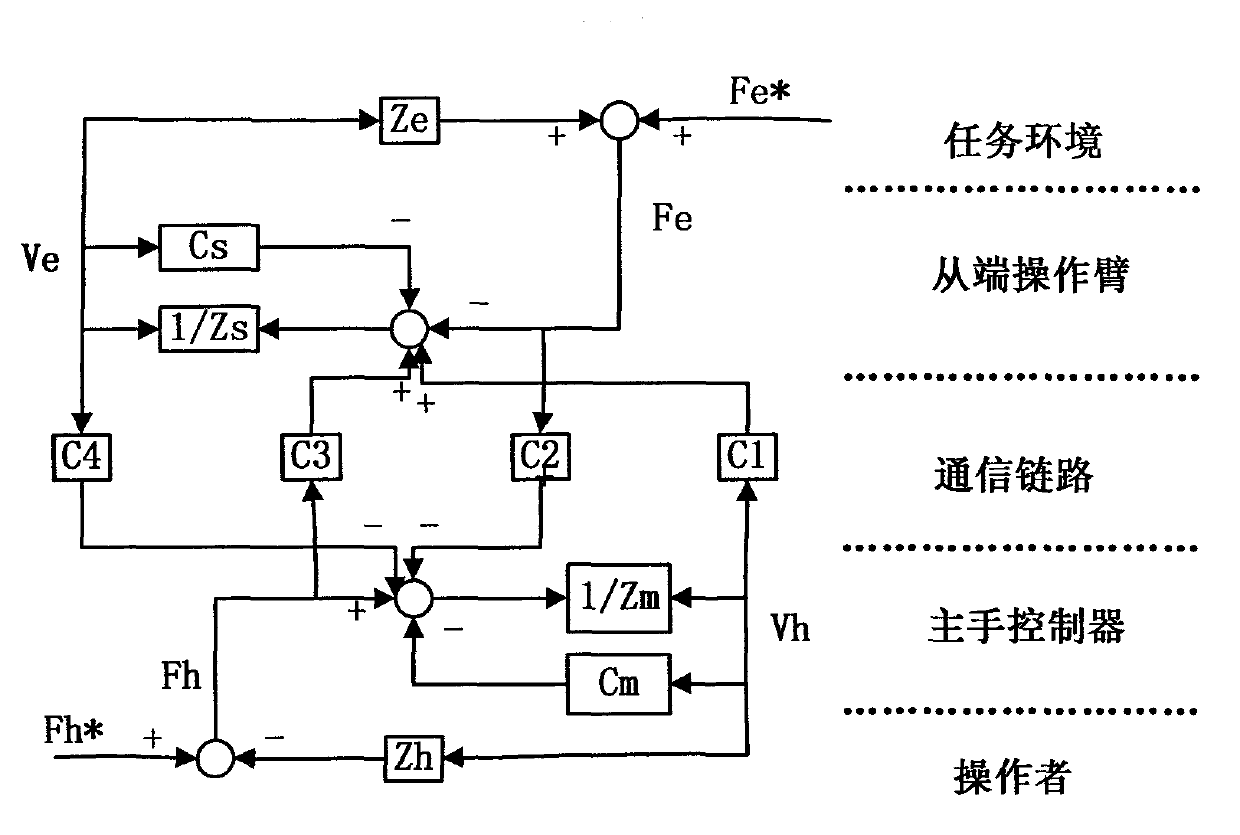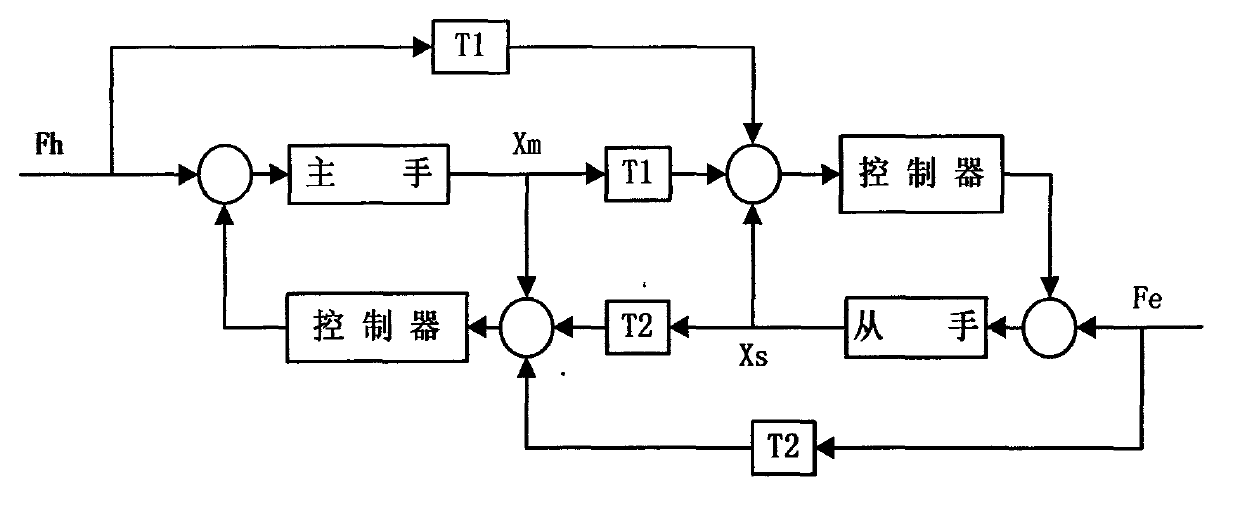Four-channel bilateral teleoperation control system based on actual force feedback
A remote control and operating system technology, applied in the field of four-channel bilateral control, can solve the problems that the real force effect cannot be fully reflected, the effect of real human hand force is not considered, and it is difficult to accurately model from the end environment impedance
- Summary
- Abstract
- Description
- Claims
- Application Information
AI Technical Summary
Problems solved by technology
Method used
Image
Examples
Embodiment Construction
[0045] The present invention relates to a four-channel teleoperation bilateral control system, which will be described in detail below in conjunction with the content of the invention and the drawings.
[0046] 1. Performance analysis
[0047] (1) Stability analysis
[0048] Reference "Passivity-based control for bilateral teleoperation: A tutorial" (EMMANUEL N, LUIS B, ROMEO O. Automatica, 2011, 47: 485-495), in R n ×R n ×R n ≥0 In, define the Lyapunov energy function V:
[0049] V ( x i , x · i , t ) = V 1 ( x i , x · i ) + V 2 ( t ) + V 3 ( x i , t ) - - - ( 9 )
[0050] Among them, the function V1 is the kinetic energy of the master-slave end manipulator:
[0051] V 1 ( x i , x · i ) = 1 2 x · m T M m ( x m ) x · m + 1 2 x · s T M s ( x s ) x...
PUM
 Login to View More
Login to View More Abstract
Description
Claims
Application Information
 Login to View More
Login to View More - Generate Ideas
- Intellectual Property
- Life Sciences
- Materials
- Tech Scout
- Unparalleled Data Quality
- Higher Quality Content
- 60% Fewer Hallucinations
Browse by: Latest US Patents, China's latest patents, Technical Efficacy Thesaurus, Application Domain, Technology Topic, Popular Technical Reports.
© 2025 PatSnap. All rights reserved.Legal|Privacy policy|Modern Slavery Act Transparency Statement|Sitemap|About US| Contact US: help@patsnap.com



